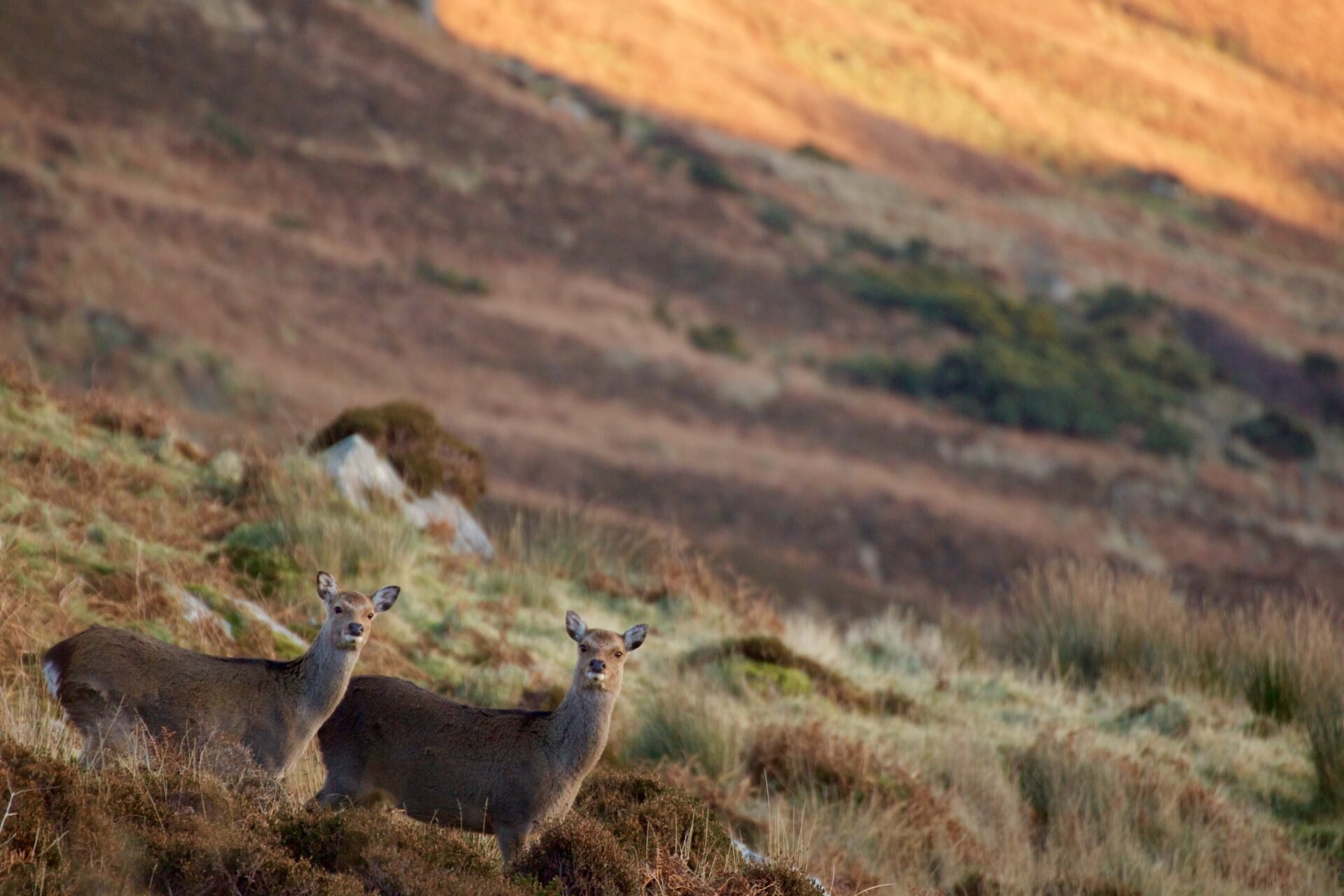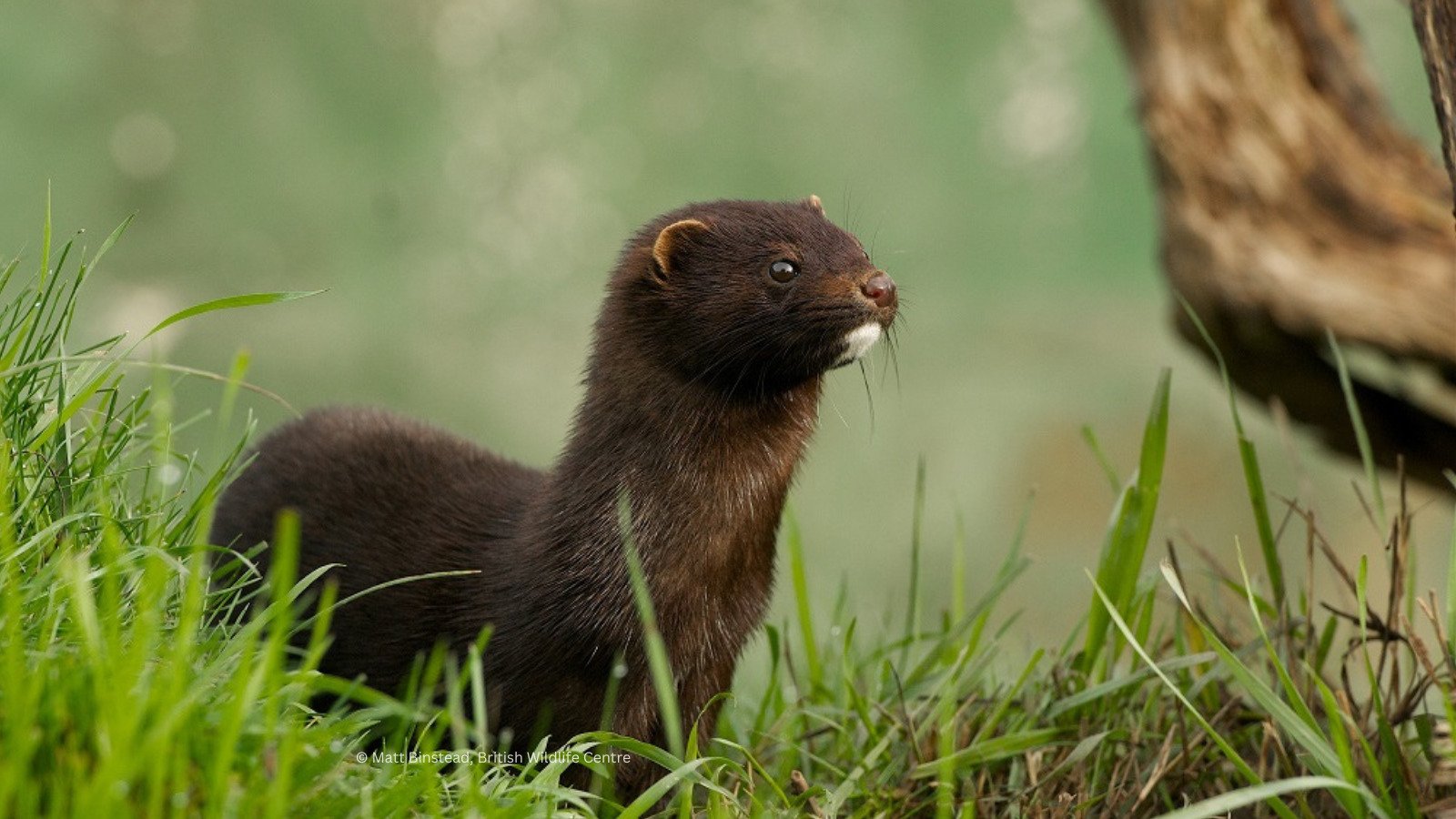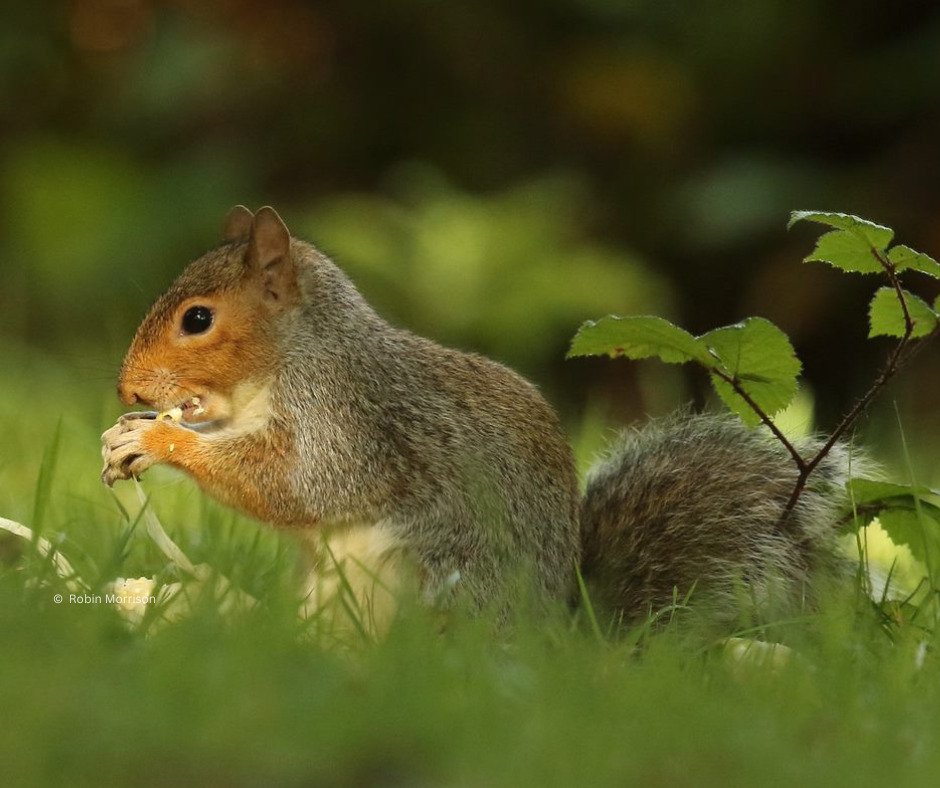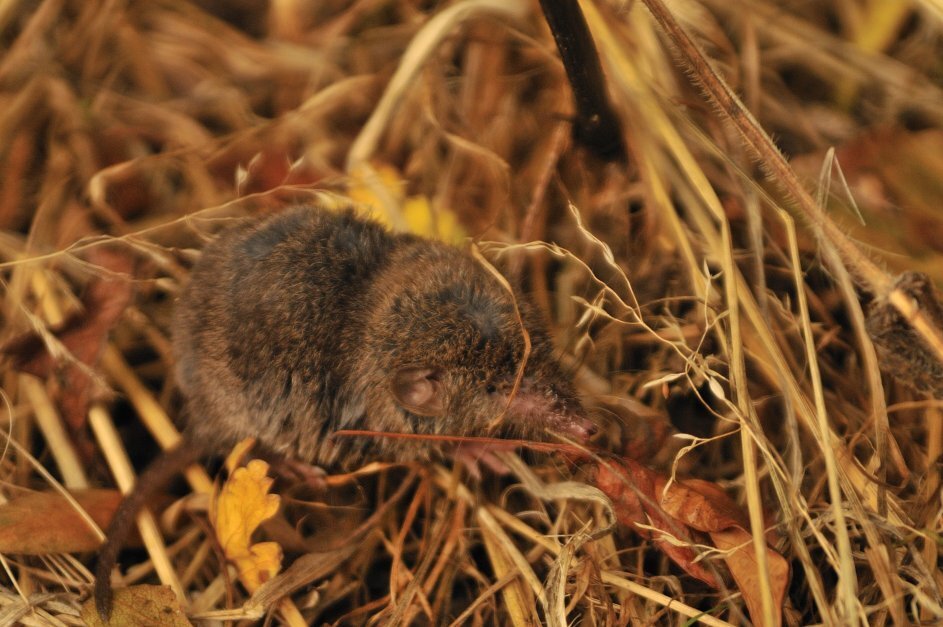Invasive Species Week 2023
This year's Invasive Species Week has now wrapped up, but we shouldn't stop there! We need to continue raising awareness about invasive non-native species and their impacts to protect our native mammals.

What is the difference between invasive species and non-native species?
Non-native species are species that have been introduced to Great Britain by people - there are over 2000 animals and plants that are non-native to GB. While most of these species are harmless, a subset of these non-native plants and animals have devastating impacts on our native wildlife. These are known as invasive non-native species. There are over 200 known invasive plant and animal species in Britain, with a number of these being invasive mammals - a number that continues to increase year by year.
In what ways can they be a problem?
Invasive mammals may have negative impacts on the environment, our health, as well as our economy. Invasive mammals can compete with native wildlife for food and habitat, as well as prey on our small native mammals.
Invasive mammals include:

American mink
Neovison vison
The American mink was brought to GB and Ireland by humans, and later escaped or misguidedly released from fur farms in the 1950s and 1960s. This small carnivore is an active predator, and preys on anything it is large enough to catch - which includes our native water voles and seabirds.
This has caused severe damage to the water vole population, where water voles are now among the 1 in 4 mammals that are under threat of extinction.
There are mink control projects all across the UK that are trying to recover the species that have been affected. These projects use mink monitoring rafts to establish if mink are present in an area, and once detected, mink are trapped and humanely dispatched.

Grey squirrel
Sciurus carolinensis
The grey squirrel was first brought from the USA to GB in 1876 and released into the wild by the Victorians. They quickly outcompeted our native red squirrels, covering 300 miles between Argyll and Stirlingshire in Scotland within the first 25 years of its introduction in GB. On top of out-competing them, the grey squirrel carried with them diseases that spread to the red squirrel population. While grey squirrels appear to be immune to the squirrel pox (Papapox virus) that they carry, the disease is fatal for the red squirrel.
Grey squirrels have also been observed to strip the bark off trees to feed on the softer inner layers. This can cause serious damage to our native trees such as beech trees, possibly even killing the trees or distorting their growth depending on the level of damage caused.

Reeves' Muntjac
Muntiacus reevesi
Native to Taiwan and China's Hainan region, the Reeves' Muntjac was introduced to Woburn Park, Bedfordshire in 1894. They were then deliberately released into the surrounding woodlands from 1901 onwards, where a combination of releases, translocations and escapes saw the wide establishment of Muntjac deer populations in Southeast England.
Muntjac deer can cause serious damage to important wildflowers such as honeysuckle, which creates a knock-on effect for the small mammals and other wildlife that depends on it for food, nectar and nest sites.
There's a new non-native species in town...

Greater White-toothed Shrew
Crocidura russula
In 2021, a new species of non-native mammal was discovered in Sunderland, England - the Greater white-toothed shrew; a species known to be invasive in Ireland. Their rapid spread in Ireland meant that it was not necessarily surprising that the shrew found its way to Great Britain, but this development is worrying as it is clearly associated with the disappearance of the native pygmy shrew in Ireland, and across other islands in Europe. More information about this can be found in the webinar recording below.
While only recently discovered, there is evidence that the greater white-toothed shrew has been in Great Britain from at least 2015. More information needs to be gathered about this shrew, as well as other small mammals, to truly assess how far the greater white-toothed shrew have spread, and if and how they are impacting our native small mammals.
Other invasive species to look out for:
What can be done?
For other invasive species, you can help us build a picture of non-native mammal population size and distribution in Britain. You can do this by downloading the Mammal Mapper app and recording the wild animals you see while out and about or recording historical sightings using our online form.
For better understanding the spread of the greater white-toothed shrew, you can help with our Searching for Shrews project. Keep an eye out for more information on how to get involved with this project! Hint... it involves owls!
To learn more about the mysterious greater white-toothed shrew, watch our special Invasive Species Week webinar:
You asked and 'Shrew God' Allan McDevitt answered:
[bg_collapse_level2 view="link" color="#ffffff" icon="arrow" expand_text="Webinar Q&A" collapse_text="close" inline_css="padding:8px; border-radius:6px; border: 1px solid #467491; background-color:#467491;" ]
[columns-container class="hide1"]
Webinar Q&A
SARAH: Is there any intention to manage or eradicate the greater white-toothed shrew in Ireland or other locations where it has been introduced now that the impacts are known and population is established?
ALLAN: There are no plans for management or eradication because it wouldn't be feasible given the size of the invasive range in Ireland.
-
SASKIA: In Ireland, what practical conservation measures are in place or being planned for the pygmy shrew to help improve the population?
ALLAN: At the moment, none I'm afraid.
-
ANON: Loved the chocolate analogy! Does metabarcoding tell us about the proportion of an item/species found within a sample, or just its presence?
ALLAN: It does give an indication of proportion of the diet also but is probably best described as ‘semi-quantitative’. Because of known biases in DNA metabarcoding, this is not precise. However, finding more DNA of something in the diet is likely to indicate a higher biomass of that species being consumed.
-
COLIN, NatureScot: Worrying that the spread of Greater white-toothed shrew may have issues for invertebrate conservation as well as impact on pygmy shrew.
ALLAN: At the moment, we are inferring an impact on invertebrates from the diet but there definitely does seem to be something serious occurring with invertebrates (as well-known opportunistic predators, they will consume what’s available to them). Ongoing work in Queens Belfast is investigating these impacts on the invertebrate community itself and we should see the results of this published soon.
-
LEAH: Did you find any presence of vertebrate remains within their diet? Was it included in the metabarcoding at all or was it just not found?
ALLAN: They are known to consume vertebrates in other regions but we didn’t find evidence of this in Ireland with our metabarcoding data. However, there is photographic evidence of one attacking a lizard!
-
LEWIS: Notwithstanding the disease element, this sounds a lot like a typical picture of population ecology of a new invading species into an area, going through rapid expansion with lots of resource availability. Which may mean the population might crash after a period of time when resources can no longer support the population expansion. Would you anticipate this picture of the shrews stabilising in time as has done on Belle Isle? With the greater white-toothed shrew population stabilising, larger prey items recovering, and potentially therefore pygmy shrews recovering slightly (although not to their previous numbers)?
ALLAN: The invasion in Ireland is about 20 years old now and as with any good invader, we are seeing them quickly adapt and switch their resource use. We don’t see any signs of them becoming less abundant in the core range with this dietary switch, individuals just being a bit smaller. So without many competitors, there little reason to suspect they would ‘crash’. This is a social shrew that is at home in both urban and rural environments. We may see though that pygmies may hold on in certain habitats (such as peatland) but we haven’t seen much of greater white-toothed shrew reaching these regions as yet. Belle Ile pygmies are quite a bit bigger than Irish ones, and tend to feed on some bigger prey items, so there are differences there that might explain why one holds on and the other doesn’t.
-
HOLLY: Is there evidence of the greater white-toothed shrew also outcompeting the common shrew across Europe?
ALLAN: There is plenty of evidence to show the outcompete other Crocidura shrews but contradictory evidence for Sorex shrews. At the moment, there isn’t compelling evidence to show they outcompete common shrews.
-
SEÁN: Seán Doyle here, ecologist with Bord Na Móna, Ireland. A couple of questions for Allan. We are finding a large number of dead GWTS in the scrubby habitats surrounding bog fringes, at first I thought we were stumbling across a recent predation event and I believed that we had disturbed a predator immediatly post kill and so they may have abandoned their prey. However on inspection, regularly no marks are found on the bodies and shrews seem otherwise unharmed. Could you possibly shed some light on this? I believed they are not so vulnerable to reodenticide due to feeding strategy?
ALLAN: Rodenticide wouldn’t be a feasible control because of their diet as you say. At certain times of year, there will be high mortality rates of shrews (sometimes 80%) and you often find them dead on footpaths etc. that are not predation events (likely starvation). I would certainly be interested to hear more about this though!
-
ANON: In the Irish case, regarding the population jumps, is it possible that there were multiple introduction events?
ALLAN: Genetic evidence suggests it was one introduction event into Ireland and then subsequent jumps within the country.
-
ANON: Do you have any recommendations for resources on shrew ecology?
ALLAN: Sara Churchfield has written several excellent books on shrews but admittedly they are more about red-toothed shrews. These can be difficult to get your hands on but 2nd hand copies are out there. The Mammal Society has great species accounts also on their websites. They are definitely an understudied group of species relative to other mammals but that is changing.
-
RO: Do we know anything about the situation (comparative diets etc.) in the Channel Islands and Scillies (although I can't remember if it's the same species of W-T shrew there - may be the lesser?)?
ALLAN: Lesser is on Scilly and a few of the Channel Islands, Greater on some of the other Channel Islands (they are not on any together). We know that the greater white-toothed shrew has replaced the lesser white-toothed shrew on some French islands. But at the moment, I am not aware of any published studies into their diet on these islands, certainly be interesting though!
-
EMILY: Has there been any evidence of the impacts of greater white-toothed shrew on other small mammals (not shrew)?. Could it fill the niches of other insectivorous species?
ALLAN: Other small mammals like rodents are usually only partially insectivorous during the spring and summer months. At the moment, I’m not aware of studies showing that it negatively impacts other small mammals in the same way it does for other shrews.
[/columns-container]
[/bg_collapse_level2]
[vertical-spacer]
Learn more about which species you should be on alert for to help prevent the establishment of a new invasive non-native species.
